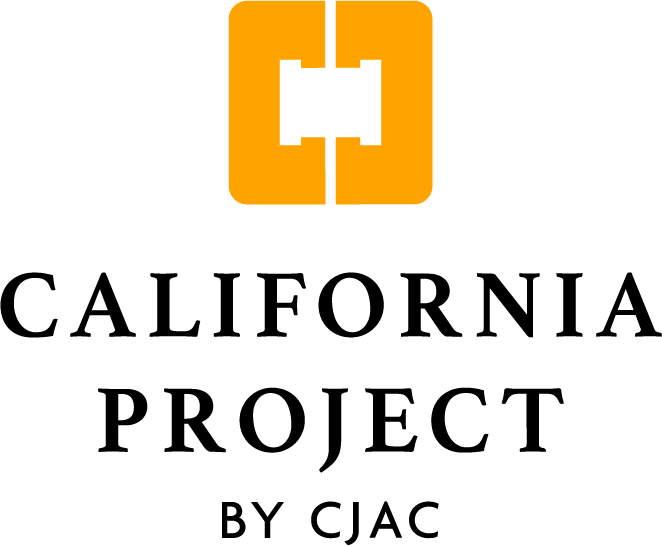Give More Money to Clients by Limiting What Lawyers Can Keep
Daily Journal - October 29, 2021
Daily Journal published version here
By Fred J. Hiestand
California voters will likely have a chance in the November 2022 general election to enact a long-overdue consumer protection law, one that bars lawyers from gouging their clients with exorbitant percentage recovery fees. Several initiatives now before the California attorney general for title and summary will soon be circulated to gather enough voter signatures to put at least one such measure on the ballot.
Three similarly proposed initiatives set a 20% lid on the amount lawyers can take from their client’s recovery to pay themselves as fees. This same percentage ceiling has long been in place for lawsuits against the federal government, half of what California lawyers commonly charge (40%) clients for comparable legal services. Enacting this reform for California would assure that clients could keep, for example, $80,000 of a $100,000 damage recovery instead of the $60,000 they are left with now. Such measures recognize that overpriced lawyer fees lead to under compensated clients; and California’s consumers of legal services deserve a fairer, more balanced division of proceeds between lawyers and clients.
Several reasons support voter approval of this important client protection:
1. There is no competition amongst California lawyers when it comes to the percentage prices they charge clients based on amounts recovered.
Despite a barrage of lawyer advertisements on billboards and electronic media for prospective clients who have been injured and seek damages, there is no competition between these lawyers with regard to the percentage of recovery — actual prices — they charge. These ads boast “no recovery, no fee,” but say nothing about the size of percentage fees lawyers charge, or even suggest that the percentage fee charged to clients is less than what other lawyers charge.
Once a client contacts a “no recovery, no fee” lawyer, however, that client is invariably presented with a “standard” contingency fee contract. Typically these contracts contain a 40% fee on recovery if the filing of a complaint is necessary, an almost uniformly certain and easily met occurrence. Though the law requires these contracts state that lawyer fees are “negotiable,” the expression is more honored in the breach than practice. Assuming injured clients are on an equal basis to negotiate with a lawyer over fees, attempts to obtain lower prices are understandably rebuffed by lawyers who insist on the “standard rate,” a purported indication that since “every lawyer charges the same, it must be fair.” Accompanying this pitch is the expressed or implied notion that a client shopping around for lower-priced lawyers would be engaged in a futile act, and if such representation could be found, the client would end up with a less-skilled, “bargain-basement” lawyer.
Contingency-fee lawyers champion this standard percentage pricing structure because it furthers their, though not their clients’, financial interests. A lawyer who considers reducing the standard price knows that if other lawyers react by also lowering their prices, individual and collective lawyer income falls. This feared eventuality, along with a “greed is good” mentality, constitutes a powerful incentive for contingency-fee lawyers to maintain uniform high-percentage recovery contracts.
2. With competition over lawyer percentage fees absent in the marketplace, regulation is essential to prevent lawyer-fee price gouging of clients.
The law recognizes the need for, and provides limits on, lawyer fees based on a percentage of the recovery in numerous contexts. A leading example is the federal government, which for the past 75 years has limited what lawyers can get paid for prosecuting personal injury cases against it to no more than 20% of what is recovered in pre-trial settlement. Since 95% of all civil cases filed in federal and California courts settle before trial, this amount has proven reasonable, workable and fair. Few if any have complained that this 20% fee ceiling hinders claims against the federal government by making it difficult for clients to secure lawyers to prosecute their claims. Similarly, Congress has limited attorney fees in actions under the Social Security Act (25% of recovery, but not more than $6,000 total) and the Veterans Benefit Act (less than 20% of the total amount of past-due benefits).
In the past, California has also placed restrictions on lawyer contingency fees in a variety of situations. Workers’ compensation, for instance, sets the attorney fee for representation in connection with an industrial injury claim that is usually between 12-15% of the amount recovered. In medical malpractice claims, the attorney fee is on a downward-sliding scale of percentages, with any amount in excess of $600,000 limited to 15% of the recovery. Compensation for attorneys conducting probate proceedings based on the value of the estate starts at 4% of the first $100,000 and goes down from there. And in suits on contracts for the recovery of claims involving the sale or lease of goods or services, the law provides that the “attorney shall not contract for or collect a contingency fee in excess of … 20% of the first $300 collected, 18% of the next $1,700 collected; [and] 13% of sums collected in excess of $2,000.” (All three proposed initiatives exempt the above listed existing restrictions from their ambit.)
These percentage limits on contingency fees show that 40% is neither necessary nor desirable for clients to secure a good lawyer and get access to the courts, undercutting any claim that a high contingency fee is the poor man’s key to the courthouse door. Indeed, there is no shortage of licensed lawyers in California — we have 265,000 of them, which amounts to one out of five nationally. A 20% fee limit on the amount of the total recovery will not, as the same limit on federal tort and other claims shows, impede clients from finding good lawyers to prosecute their damage suits.
3. Voters are the last, best hope for reining in the percentage recovery for personal injury and related claims because (other than the existing limits mentioned above) the Legislature has proven itself unwilling or unable to do so.
The above examples of government acting to protect consumers from lawyer fee gouging are mostly several decades old and adopted in response to “crises” that aroused widespread public outrage for reform. Workers’ compensation came about from an addition to the California Constitution (Article XIV, Section 4) enacted in response to industrial accidents that left too many workers uncompensated for their injuries. By 1920, 42 of the then-48 states adopted workers’ compensation laws, and by 1963 all states had them. The sliding-scale limits on the percentage recovery allowed for attorney fees in medical malpractice lawsuits resulted from a 1974 professional insurance crisis that prompted then-Gov. Jerry Brown to convene a special session of the California Legislature and an overwhelming bipartisan majority to enact the Medical Injury Compensation Reform Act.
California is now a changed place politically from what it was when these measures were enacted. Potential plaintiffs are not an organized and politically active group. While people know they may be injured in the future, that alone is not a sufficient motivation for them to join together and lobby for their “uncertain to happen” future interests, such as not having to overly compensate attorneys to represent them should they become injured. Those who have been injured may feel cheated by the exorbitant attorney fees taken from their recoveries, but also likely feel powerless to do anything about it since the 40% fees charged are “standard,” and these adhesive contingency-fee contracts have been upheld by courts.
Ironically, those who claim to speak for the interests of injured plaintiffs are the very contingency-fee attorneys with a financial interest in securing and keeping the highest (and “standard”) contingency fees obtainable. Other so-called consumer groups favoring the status quo of hyper-inflated percentage contingency fees often receive, and are influenced in their opinions by, generous contributions to their coffers from contingency fee lawyers.
Not surprisingly, since California’s sliding-scale percentage fee was enacted 46 years ago for medical malpractice claims, every effort to rein in these fees for all consumers by legislation has been defeated in the Legislature. No bills to achieve this end have been introduced recently because it is widely known they would receive a hostile reception and be predictably killed, if they were even to get a hearing. This is mainly due to the influence of the powerful contingency fee bar and its hefty contributions to legislators in leadership and to members of the judiciary committees that serve as the graveyard for such bills.
Of course, the excessive percentage recovery amounts lawyers take from their clients as fees enable them to court politicians through copious campaign contributions. This process keep these fees high and secures for them passage of ever more laws to increase recoverable damages, thus boosting the base amounts from which the lawyers’ percentage fees are calculated. Even many defense lawyers are either silent or secretly support the status quo of high contingency fees because they also serve to boost higher hourly fees charged to defend clients from plaintiffs’ claims. These symbiotic interests comprise a perpetual moneymaking machine that keeps on keeping on.
Only a vote of the people can correct this inequity by restoring to clients more of what rightly belongs to them from lawyers who take too much for themselves at their clients’ expense.
Fred Hiestand is general counsel to the Civil Justice Association of California, which is the founder of Coalition for Fair Legal Fees and sponsor of initiatives limiting attorney legal fees to not more than 20% of amounts recovered for clients.


